Called Out of Darkness: A Spiritual Confession Read online
Page 17
Sometime in the summer of 2002, I began to talk to God about this whole question. I began to talk with Him about how far I was willing to go in devoting my life to Him. And the question of the Stigmata obsessed me. Was I willing to say to God, “Do with me what you will”? What if He were to visit the wounds of the Stigmata on me?
2 0 5
Understand, I didn’t think any such miracle was in the offing. Who was I to be visited with the Stigmata? But the point was: could I say to the Lord, Do what you will and I will accept it? Who was I as a follower of Christ? And just what was a follower of Christ, after all?
As a child, I’d once pledged my life in its entirety. What would I do now if the Lord asked of me that I come and follow Him? How was I going to walk away from the support of my family, forty-nine employees, two condominiums, and five buildings?
My conversations with God during those quiet moments in the pew before Mass were becoming ruminations.
“Lord,” I was saying, “I’m writing another book, and well, this book is really going to be for you and about you, but it will contain the old motifs and some of the old characters, and of course strike some people as profane, that’s bound to happen, but Lord, this is my bread and butter, and Lord, it’s the bread and butter of quite a number of other people, too. No, I can’t say, ‘Do what you will with me.’ How can I say this? I have too many people to take care of, including myself.”
This had become, as I recall, a regular rambling. “Lord, what does it mean to belong to you? Lord, you came here for us, you lived amongst us, you died for us! And rose amongst us. What does it mean that I love you, that I am yours?”
How abstract and symbolic were the thoughts of the Stigmata! If God chose me for such an honor, I’d have to refuse. I have to write with these hands, don’t I? Where was the Catholic girl who would not have said no to anything? She C a l l e d O u t o f D a r k n e s s wasn’t a mere victim of childhood enthusiasms and illusions. She was someone who still resided in me.
And she had known that barriers to the priesthood meant nothing when the Lord chose to gift the Stigmata to His servants. To those whom the Lord gifted with His revelations and His visions, opportunities were given which far surpassed any Holy Orders offered by His church. I believed in God. I feared Him. I feared what He might ask of me. I saw the shallowness of my commitment. I saw the incompleteness of my love. Mine was a negotiated abandonment, and that meant it was not a true abandonment at all.
I don’t recall talking to anyone about this. It was too intensely personal to share with another. And how pompous and foolish it might have sounded over a café table. What if God wants something more of me? I’m afraid.
“Why would God want something more from you?” a critic might have demanded. “Who the hell are you? Why should God care?”
I cared. Untutored, confused, I was privy to a remembered devotion and a wisdom that informed it, and had never let me forget it over all these years.
Then one Saturday afternoon, everything changed. The change was as dramatic as the change of December 6, 1998, but I didn’t know it. I was seated in the pew and going through The Great Negotiation—what I gave and what I didn’t give, what I wanted to do, and what I feared to do. And then the simplest of solutions occurred to me: Write for God. Write for Him. Write only for Him. 2 0 7
Begin now, as you walk out of this church after Mass, to be a writer only for Him. Take whatever talent you have, and experience you’ve acquired, and put them to work strictly and entirely for Him. Never write another word that is not for Him. Write His life! Write for Him.
Broken being that I am, I did not implement this commitment until December of that year. But the Consecration was made that summer afternoon, and a veil was lifted from my eyes, and immediately the preparation for the work began.
The year itself was one of perfect disaster. Within weeks of my decision to write for the Lord, my husband was diagnosed with a brain tumor, and within four and one-half months he was dead.
During Stan’s final illness, I wrote one more book of the Vampire Chronicles, and a strange book it was. It completed the story of the novel Blackwood Farm and closed the Vampire Chronicles as a roman-fleuve, but it also gave voice to my strongest longings to be joined to Christ in a new and complete way.
My hero, the Vampire Lestat, the genderless giant who lived in me, was as always the voice of my soul in this novel, and it is no accident that he begins it with a cry of the heart,
“I want to be a saint, I want to save souls by the millions!”
Lestat had to tell the truth because I had to tell the truth, and by the end of the novel, confessing his failure ever to be anything but a rambunctious reprobate and Byronic sinner, he nevertheless resigned as the hero of the books which had given him life.
C a l l e d O u t o f D a r k n e s s Be gone from me, oh mortals who are pure of heart. Be gone from my thoughts, oh souls that dream great dreams. Be gone from me, all hymns of glory. I am the magnet for the damned. At least for a little while. And then my heart cries out, my heart will not be still, my heart will not give up, my heart will not give in—
—the blood that teaches life will not teach lies, and love becomes again my reprimand, my goad, my song. And so on the day after my birthday, October 5, 2002, Lestat made his farewell. This character who had been my dark search engine for twenty-seven years would never speak in the old framework again.
And my life as a child of Christ, a writer for Christ, a writer consecrated to Christ, began.
1 2
It wa s n’t u n t i l t h e fa l l o f 2 0 0 5 that I published the first part of my life of Jesus: Christ the Lord: Out of Egypt. From the summer of 2002 through the spring of 2005, my life was consumed with research. I studied not only the ancient historians Philo and Josephus, and all the New Testament scholarship I could lay hands on, but Scripture itself, reading over and over again the Gospels until the language, to which I’d grown so dead in childhood, came alive again, and the vital story of Christ’s life flowed through chapter and verse.
Now this was no small feat, coaxing the Gospels to come alive, and it took tremendous dedication; but it was also incredibly rewarding.
It was again a period of relative isolation from contemporary goings-on in Catholicism, and organized religion in gen-C a l l e d O u t o f D a r k n e s s eral, a period of study that had to do with the New Testament canon and how I might create a probable fictional world for the Christ to whom I was committed body and soul. My reading skills improved beyond all expectations; I sought days of study without interruption, and finally long nights in which to complete the book in the silence of the sleeping house, with a lone guard on duty to provide meals and coffee for which I barely stopped my work. Very early on, as I worked on the first book, my commitment was to the orthodox doctrine of the Incarnation, the magnificent love story of God and man which had drawn me back to religion in the first place, the great and beautiful tale of Jesus becoming one of us.
My studies of Jewish life in the first century were also key to my research. I was powerfully influenced by Professor Ellis Rivkin, the Jewish historian, and by others who wrote directly about Jesus as a Jew in a Jewish world. Essentially, my challenge became a conservative one: to render a convincing portrait of the Jesus of Scripture, the Jesus of tradition, the Jesus of personal devotion and belief. Only the level of realism in the book was radical. That is, I took the technique of the realistic novel and used it as intimately as possible to present the living Boy Jesus of Scripture with His family, in Egypt, and in Nazareth after His return home. So complete was my commitment to the orthodox doctrine of the Incarnation that no miracle reported in Scripture was left out by me, or skimmed over, or watered down for any contemporary prejudice on the part of “modern”
believers who seek to “tame” the power of Scripture in the name of a variety of social concerns.
2 1 1
Jesus is God to me in these pages. Jesus is God to me in my belief. Jesus is God
when I pray to Him, and when He answers me. No other “version” of the Man from Galilee has ever held my interest or evoked in me the slightest interest. It wasn’t until February 2007 that the second volume was completed: Christ the Lord: The Road to Cana— a story of Our Lord’s last winter in Nazareth before His Baptism in the Jordan, His confrontation in the desert with Satan, and His return to Cana for the miracle of water turned into wine. Once again the commitment to the orthodox dogma of the Incarnation is total. The writings of the great theologians Karl Rahner and Walter Kasper informed and nourished my belief, as did the work of numerous New Testament scholars who do not, in spite of their tremendous range and obvious sophistication, apologize for their own vibrant Christian faith. The numerous books by New Testament skeptics always manage to be helpful, simply because these people ask so many interesting questions. But my answers invariably come out on the side of orthodox faith.
I’m still with the Creed as I say it weekly at Mass; and the
“hero” of my new Christian novels is God and Man in the Second Person of the Blessed Trinity, Jesus Christ. How this has “happened” is not so easy to explain. It isn’t simply a matter of finding skeptical New Testament scholarship so poor, so shallow, so irresponsibly speculative, or so biased. That has indeed been the case. But something else, something infinitely more positive, has been at work in my spiritual journey since 2002—a deepening love of the Incarnation, a deepening meditation on what the whole thing seems to mean.
C a l l e d O u t o f D a r k n e s s Now I don’t for a moment pretend to be a theologian, and I cannot write with the concise poetic beauty of a Rahner or Kasper, or Joseph Ratzinger, Pope Benedict XVI. No matter how beautiful, theology always ultimately challenges me with its density of abstractions, and sometimes even with its abstract intent.
What I must do here is convey to the general reader—the member of the mainstream who is my brother or sister in the mainstream—how the Incarnation has become the central overwhelming and sustaining mystery of my life. This morning I was in church talking to the Lord, and thinking about this.
I live in California now.
And I’m miles from the sumptuous and enormous churches of New Orleans that I’ve described. But the church I go to in California is also an exquisite and uplifting church. One feature it has which is of great meaning to me is a shrine of the Virgin Mary, with a pure white marble statue of Our Lady holding her Infant Son. Nearby is a bank of real wax candles, burning in tiny blue glasses, and before the shrine is a prie-dieu, where one can comfortably kneel, resting one’s elbows on the shelf of wood that is part of the kneeler, and pray.
I treasure the time before Mass during which I can come to this shrine and address my special petitions to the Virgin, which are always fervent and gentle and basically have to do with a plea for care. “Take care of me, Mother,” is perhaps the most frequent refrain.
What overcame me this morning was a powerful sense of 2 1 3
why the Child Jesus in Mary’s arms meant so much to me—
why this particular figure of the Lord always touches my heart.
What played out for me was a sense of Our Lord’s entire life on earth, and the definite choices He’d made as to His coming and to His time amongst us.
After all, what does the image of this Sacred Child really mean? It means He didn’t come down Mt. Sinai as a fullgrown male to live out His years of ministry for us and to die for us in Jerusalem. It means that He entered this world through the body of the Virgin Mother, that He came into the world as all of us come, born of woman, tiny, seemingly helpless, and surely obliged to experience life as an infant experiences it, as a child experiences it, taking weeks and months and years before the power of adulthood was within His grasp.
This astonishes me when I think of it, when I really seek to penetrate what it means.
God became a Baby. God became a Child!
His tender little hands and feet, as depicted in the marble statue, don’t have the imprint of the redemptive wounds in them. They’re seemingly soft and vulnerable and purely innocent. Yet this is God. This is God amongst us. This is God as He was in that mournful Child of the icon, clinging to Our Mother of Perpetual Help.
Why did He do it this way! Think about it. He made the Universe. So He could have done it any way that He liked. He knew what His intentions were. He knew what we were. He knew what He meant to do. Why begin in such C a l l e d O u t o f D a r k n e s s complete obscurity and helplessness? Why begin in the arms of a woman who surely had to provide for His every physical need?
I find myself confounded by this, as confounded as I am by the horror of the Crucifixion—that the Lord surrendered to the process of birth and maturation, that He entrusted Himself to the weakness and the inevitable frustrations of a developing little boy.
This is not merely the measure of love, but the measure of an overwhelming affirmation of the human condition. You have been a child, so I became a child. That seems to be what the Infant in Mary’s arms is saying to me. No wonder He can later say with such conviction in Matthew 18: “Unless you turn and become like children, you will not enter the kingdom of heaven.” He had become a child, quite literally and completely, to enter the Kingdom of Humankind. I found myself dazzled by this as I thought of it this morning. I was dazzled by His long journey from babyhood to manhood, dazzled by the tenderness of those little hands and little feet.
No wonder a great frisson paralyzes me when I look into the Christmas crib, when I hear the phrases of certain old Celtic Christmas hymns. Sweet little Jesus Boy!— The Child born in the Manger is more than sentiment and pretty devotion. It’s a stark and chilling mystery, this helpless God cradled among animals and fearful humans, a deposit of infinite power in the midst of the age-old stable where man and beast, in the dark dead of winter, have so long found common rest. The Light shines in the darkness, and the darkness grasps it not.
2 1 5
How tragic the misunderstanding of modern students of history who snidely declare that Christians coupled the birth of the Christ with an older pagan feast of midwinter in which men and women, full of hope for the return of the warmth of summer, burnt the traditional fires in celebration of the eternal return of life-giving warmth. Christ’s birth is the embodiment of this age-old ritual!
It is its fulfillment, and how wise were the church fathers who understood it, and saw the shining Babe as the eternal flame round which generations of pagans had sought a desperate warmth. I wonder sometimes if there are not Christmas Christians and Passion Christians, and if I have not always been a Christmas Christian, coming closer to the fathomless love of God in His becoming one of us in the Christmas crib. It is not that Our Lord’s Passion lacks meaning for me. How could that possibly be? How could I not follow Him to the cross and to the nails and to the spear that pierces His side? This is The Redemption! This is The Atonement!
I’ve already confessed my deep longing for the gift of the Stigmata.
It’s only that understanding begins for me in the tableaux of Christmas. A thrilling certainty begins there, in the moment when that Infant is placed in the humble bed of straw. He died for our sins, yes. But He was also born for them, nurtured for them, held in His Mother’s arms for them, held up by His Mother for us.
Only the God who made the vast reaches of space, its black holes, its sprawling galaxies, its supernova, could have made Himself so small. And what is it we see in that small-C a l l e d O u t o f D a r k n e s s ness? A child we want to lift to our breast, a child we want to sing to, a child we want to rock in our arms. What is the word for something so magnificent and so clever, so grand and irresistible? So splendid and so mundane? No wonder that Christmas remains irrepressible, no matter how its critics rise and fall.
And they do come in all guises, from the strict Christians who deplore the hymns in the commercial department stores, to the skeptics who want to ban the Christmas family from secular space. Protestants once banned the medieval Christian pageants;
they drove the Holy Family from the church square. Puritans in America went so far as to make the celebration of Christmas illegal. Puritanical secular critics denounce the street decorations that proliferate at Christmas, and the piped-in carols that bring shoppers to the commercial mall. And yet, as I have suggested earlier, the Christmastime commercial mall is sometimes the only place where one can, in the bustling concrete cities of the modern world, feel the power of the sacred as the old hymns echo and re-echo the shattering sweetness of the original feast. One has to question the power with which religious puritans and secular puritans try to stamp out all ancient religious feasts in America, how they become bedfellows in their war on Hallowe’en, and their war on Christmas—and how determined they are to rid American experience of the ancient seasonal calendar that once undergirded rural and urban life. They know not what they do.
Hallowe’en survives with its rich echoes of the Feast of All Souls, and the Feast of All Saints, and is being reconfigured in many places in America; thank Heaven, it refuses to die. 2 1 7
The Holy Family always survives. The Christ Child will not be denied. And everywhere on December 24 and 25, the Child is born again in the midst of inevitable winter darkness and reaches out with warm delicate and curling fingers: A thrill of hope the weary world rejoices For yonder breaks a new and glorious dawn. This is the mystery that rivets me to the heart of Christ. This is one way of talking of the miracle that theologians have written volumes to describe. This is the mystery that drives my life. You became a child for me, a babe that helpless? What can I do for you?
This love, this pondering, this obsession with God as a Human Being, has been the fruit of my labors in writing two books dedicated to Christ.
But my education from 2002 on involved not only an obsession with God’s mercy and love in the pages of Scripture that I so effortlessly embraced. It also involved many new experiences of what religion meant to people in America, and what the contemporary concerns of my church were. As I wrote one book and went on to write another, I was in fact traveling two distinct paths. One path was to the Christ Child, but the other path brought me deeper and deeper into the wilderness in which I am still, to some extent, lost.

 Interview with the Vampire
Interview with the Vampire Christ the Lord: Out of Egypt
Christ the Lord: Out of Egypt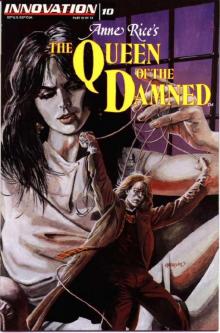 The Queen Of The Damned
The Queen Of The Damned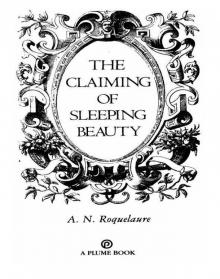 The Claiming of Sleeping Beauty
The Claiming of Sleeping Beauty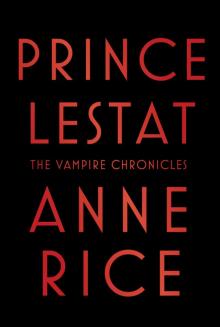 Prince Lestat
Prince Lestat The Master of Rampling Gate
The Master of Rampling Gate The Vampire Lestat
The Vampire Lestat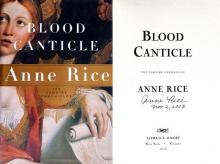 Blood Canticle
Blood Canticle Beauty's Release
Beauty's Release Pandora
Pandora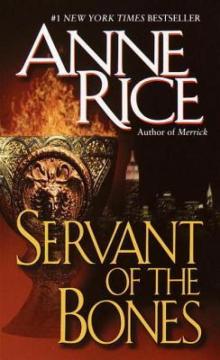 Servant of the Bones
Servant of the Bones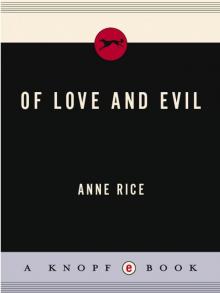 Of Love and Evil
Of Love and Evil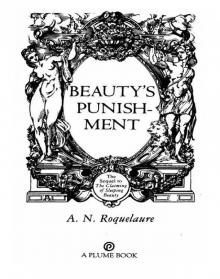 Beauty's Punishment
Beauty's Punishment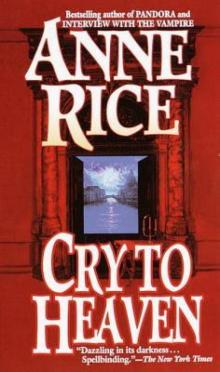 Cry to Heaven
Cry to Heaven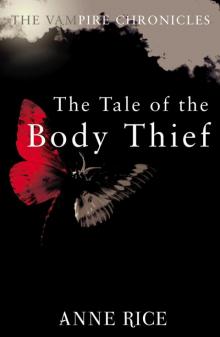 The Tale of the Body Thief
The Tale of the Body Thief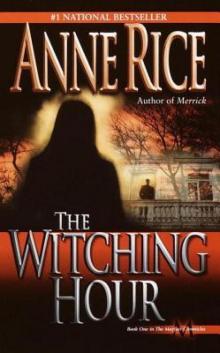 The Witching Hour
The Witching Hour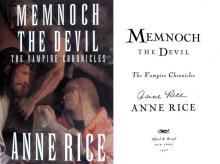 Memnoch the Devil
Memnoch the Devil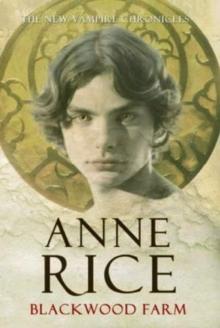 Blackwood Farm
Blackwood Farm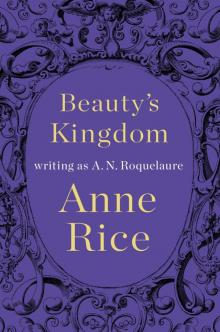 Beauty's Kingdom
Beauty's Kingdom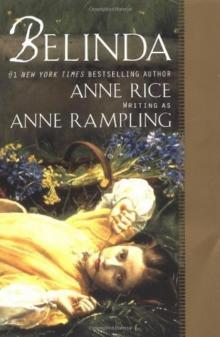 Belinda
Belinda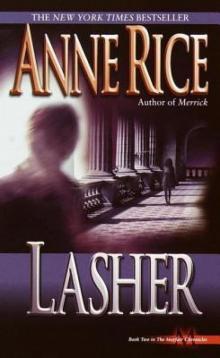 Lasher
Lasher Vittorio, the Vampire
Vittorio, the Vampire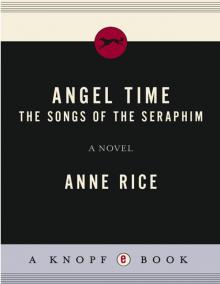 Angel Time
Angel Time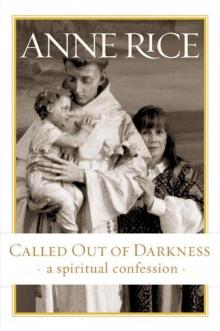 Called Out of Darkness: A Spiritual Confession
Called Out of Darkness: A Spiritual Confession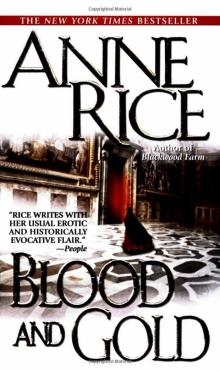 Blood And Gold
Blood And Gold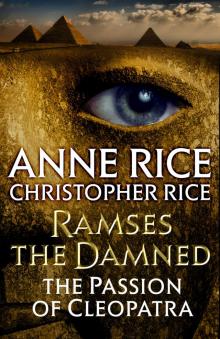 The Passion of Cleopatra
The Passion of Cleopatra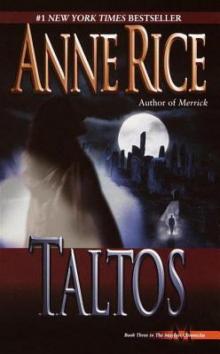 Taltos
Taltos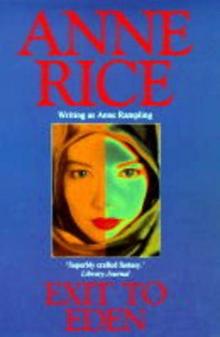 Exit to Eden
Exit to Eden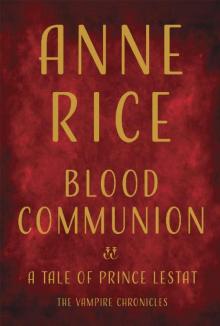 Blood Communion (The Vampire Chronicles #13)
Blood Communion (The Vampire Chronicles #13)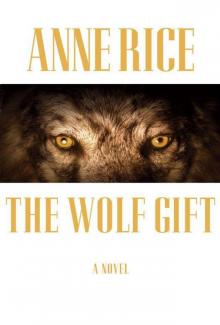 The Wolf Gift
The Wolf Gift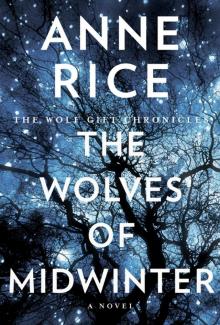 The Wolves of Midwinter
The Wolves of Midwinter Prince Lestat and the Realms of Atlantis
Prince Lestat and the Realms of Atlantis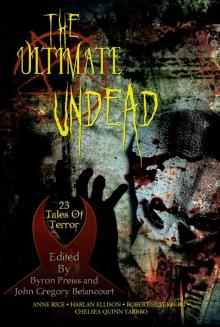 The Ultimate Undead
The Ultimate Undead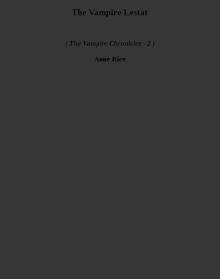 The Vampire Lestat tvc-2
The Vampire Lestat tvc-2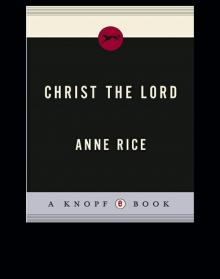 The Road to Cana
The Road to Cana Taltos lotmw-3
Taltos lotmw-3 Merrick tvc-7
Merrick tvc-7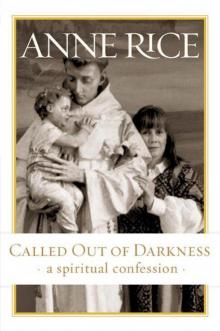 Called Out of Darkness
Called Out of Darkness Pandora - New Vampires 01
Pandora - New Vampires 01 Bllod and Gold
Bllod and Gold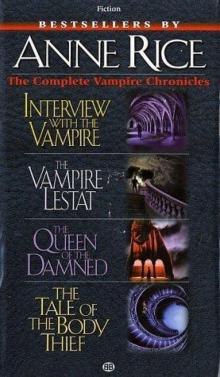 The Queen Of the Damned: Vampire Chronicles
The Queen Of the Damned: Vampire Chronicles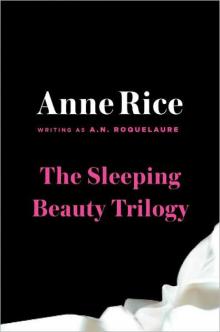 The Sleeping Beauty Trilogy
The Sleeping Beauty Trilogy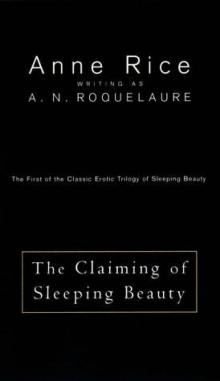 The Claiming of Sleeping Beauty b-1
The Claiming of Sleeping Beauty b-1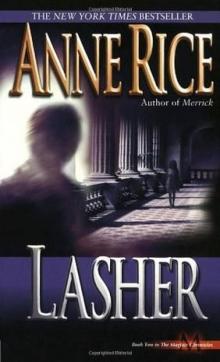 Lasher lotmw-2
Lasher lotmw-2 The Tale of the Body Thief tvc-4
The Tale of the Body Thief tvc-4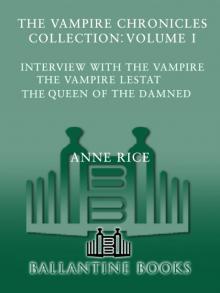 The Vampire Chronicles Collection
The Vampire Chronicles Collection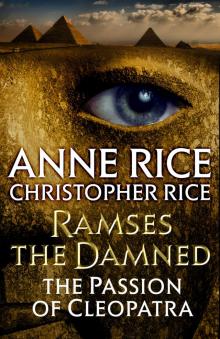 Ramses the Damned
Ramses the Damned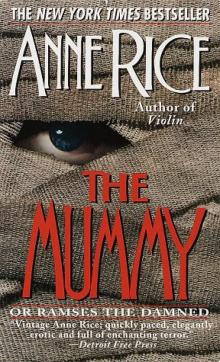 The Mummy - or Ramses the Damned
The Mummy - or Ramses the Damned Vittorio, The Vampire - New Vampires 02
Vittorio, The Vampire - New Vampires 02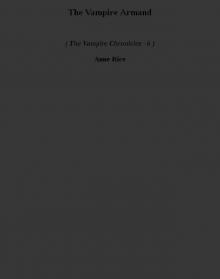 The Vampire Armand tvc-6
The Vampire Armand tvc-6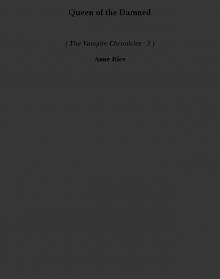 Queen of the Damned tvc-3
Queen of the Damned tvc-3 The witching hour lotmw-1
The witching hour lotmw-1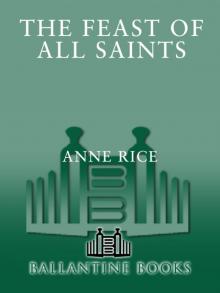 Feast of All Saints
Feast of All Saints Queen of the Damned
Queen of the Damned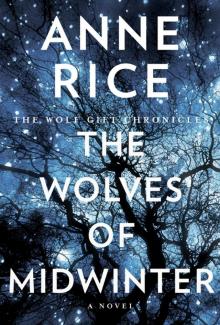 The Wolves of Midwinter twgc-2
The Wolves of Midwinter twgc-2 The Mummy
The Mummy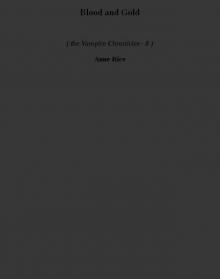 Blood and Gold tvc-8
Blood and Gold tvc-8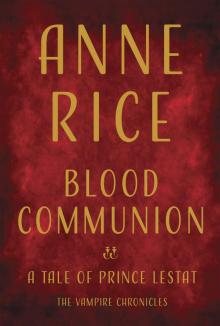 Blood Communion
Blood Communion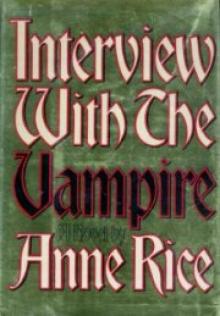 Interview with the Vampire tvc-1
Interview with the Vampire tvc-1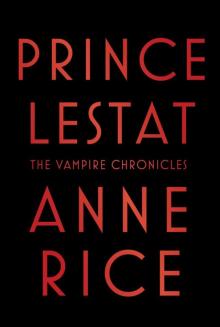 Prince Lestat: The Vampire Chronicles
Prince Lestat: The Vampire Chronicles